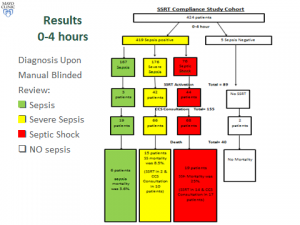Author Interviews, BMJ, Cost of Health Care, Diabetes, Mayo Clinic / 09.12.2015
Overtesting in Stable Diabetes Leads To Overtreatment
MedicalResearch.com Interview with:
Rozalina G. McCoy, M.D.
Senior Associate Consultant
Division of Primary Care Internal Medicine
Assistant Professor of Medicine
Mayo Clinic
Medical Research: What is the background for this study? What are the main findings?
Dr. McCoy: Blood glucose monitoring is an integral component of managing diabetes. Glycosylated hemoglobin (HbA1c) is a measure of average glycemia over approximately 3 months, and is used in routine clinical practice to monitor and adjust treatment with glucose-lowering medications. However, monitoring and treatment protocols are not well defined by professional societies and regulatory bodies; while lower thresholds of testing frequencies are often discussed, the upper boundaries are rarely mentioned. Most agree that for adult patients who are not using insulin, have stable glycemic control within the recommended targets, and have no history of severe hypoglycemia or hyperglycemia, checking once or twice a year should suffice. Yet in practice, there is a much higher prevalence of excess testing. We believe that such over-testing results in redundancy and waste, adding unnecessary costs and burdens for patients and the health care system.
We therefore conducted a large retrospective study among 31,545 adults across the U.S. with stable and controlled type 2 diabetes who had HbA1c less than 7% without use of insulin and without documented severe hypoglycemia or hyperglycemia. We found that 55% of patients had their HbA1c checked 3-4 times per year, and 6% had it checked 5 times a year or more. Such excessive testing had additional harms as well – we found that excessive testing was associated with greater risk of treatment intensification despite the fact that all patients in the study already met glycemic targets by having HbA1c under 7%. Indeed, treatment was intensified by addition of more glucose lowering drugs or insulin in 8.4% of patients (comprising 13%, 9%, and 7% of those tested 5 or more times per year; 3-4 times per year; and 1-2 times per year, respectively).
(more…)


























